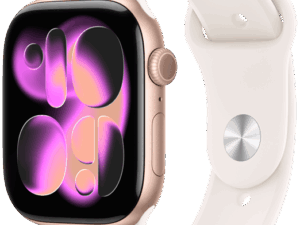HIV (human immunodeficiency virus) is a virus that weakens the immune system. The immune system is responsible for the body’s self-defense against illness and disease. If left untreated, HIV can progress to AIDS (Acquired Immuno-Deficiency Syndrome). AIDS will progressively compromise your immune system, making you more vulnerable to normally uncomplicated infections and diseases. Thankfully, modern advances in research allow HIV-positive people to live normal and healthy lives without developing AIDS or transmitting the virus.
Different Strains of HIV
There are two main strains of HIV: HIV-1 and HIV-2. HIV-1 is the most common virus, accounting for 95% of all global infections. HIV-2 is much less common but isn’t as infectious.
Understanding At-Risk Groups
The history of marginalization and unequal health access can directly impact at-risk communities. While HIV doesn’t discriminate, it can impact specific communities at a higher frequency. Currently, gay, bisexual, and other men who have sex with men (gbMSM) account for 52.2% of all HIV cases in Canada. Likewise, people who inject drugs account for an additional 16.6% of all new HIV infections.
HIV After Exposure
Unprotected sexual exposure to HIV doesn’t always guarantee an infection. Recent studies have shown that HIV-1 transmission occurs one out of a thousand times. Establishing a new infection isn’t easy for the virus, as it needs access to the bloodstream for replication. Barriers including genital mucosa (the mucous membrane inside of the vagina), epithelial cells (a type of cell that lines the surfaces of your body including skin, blood vessels, urinary tract, and organ.), and initial immune responses all work to prevent attacks. Despite these barriers, there are still thousands of new infections every year.
For transmission to occur, HIV must get into the bloodstream of an HIV-negative person through a mucous membrane, open cuts, sores, or through direct injection. Transmission methods vary, but you must encounter specific bodily fluids of an HIV-positive person who has a detectable viral load to be at risk. These fluids include breast milk, vaginal fluids, semen, pre-seminal fluids, rectal fluids, and blood.
Individuals who actively take HIV medication as prescribed and keep an undetectable viral load have virtually no risk of sexually transmitting HIV to their partners.
Preventative Methods Against HIV
Today, there are a few ways to prevent HIV transmission, including regular condom use and PrEP (pre-exposure prophylaxis – medicine taken to prevent getting HIV ) medications. PrEP use depends on what’s best for the patient and risk profile, with two different options available. At-risk individuals can take prEP daily to build a consistent level of medication in the system, or PrEP on demand is used for chance encounters. On demand, schedules are less effective but still protect against HIV. Individuals can use PEP (post-exposure prophylaxis) after a potential exposure to reduce the chance of becoming HIV-positive. While not everyone exposed to HIV will catch the virus, reducing the risk is the safest option.
Most Common Transmission Methods for HIV
HIV most commonly spreads through vaginal or anal sex with an HIV-positive individual without protection or medication to treat HIV. Anal sex is riskier statistically than vaginal sex. Likewise, sharing drug equipment like needles or syringes with a positive person can also spread HIV.
Less commonly, HIV can spread through pregnancy, birth, or breastfeeding. HIV medications and strategies have lowered the risk of mother-to-child transmission to less than 1% overall. Getting stuck with an HIV-contaminated needle or sharp object is also a low-risk method for contracting HIV.
In sporadic cases, having oral sex can transmit HIV. The chance of an HIV-negative person getting HIV from oral sex is extremely low. Likewise, there is a minimal chance of getting HIV through blood products or transfusions. Rigorous testing in North America virtually eliminates this risk but may rarely occur. Contact with broken skin, wounds, or mucous membranes, breaking the skin through biting, and open-mouth kissing are also extremely rare transmission points for HIV. HIV is not spread through saliva and would require blood to transmit to another individual.
IS HIV Treatable and Curable?
With modern advances, many individuals living with HIV can live healthy lives every day without risking transmitting the virus to sexual partners. Unfortunately, HIV currently has no cure available. HIV treatment suppresses an HIV-positive individual’s viral load to undetectable levels. These undetectable levels mean a carrier cannot transmit the virus to others. The earlier an individual starts treatment for HIV, the better their overall health.








